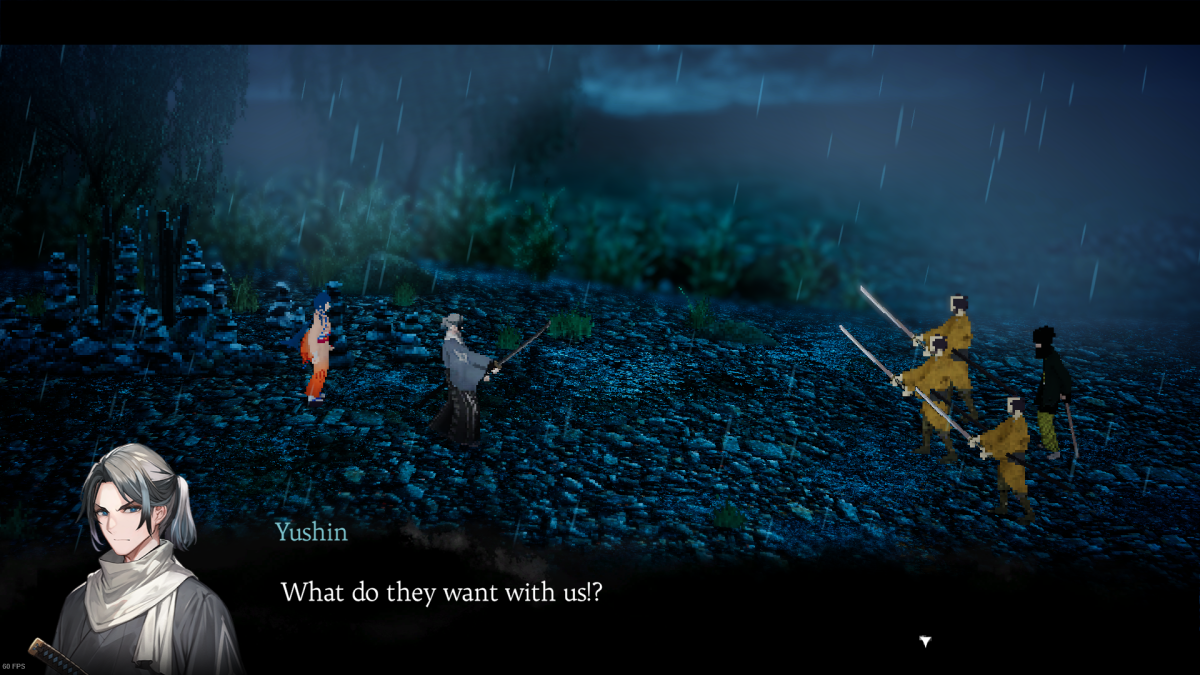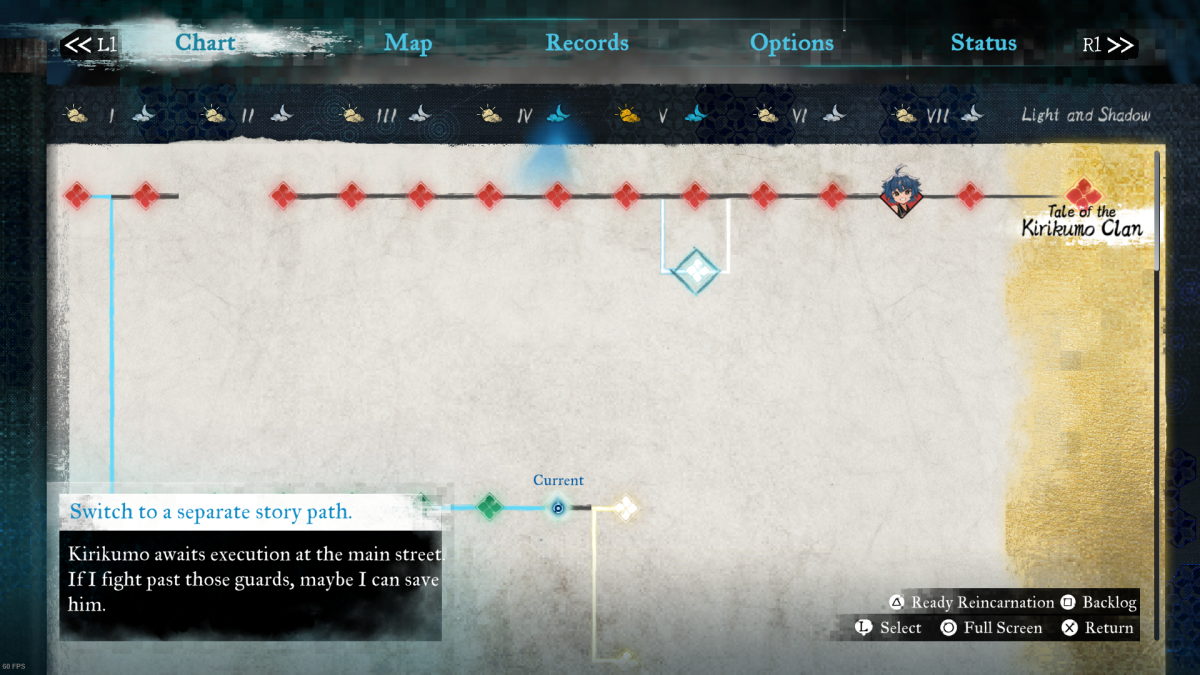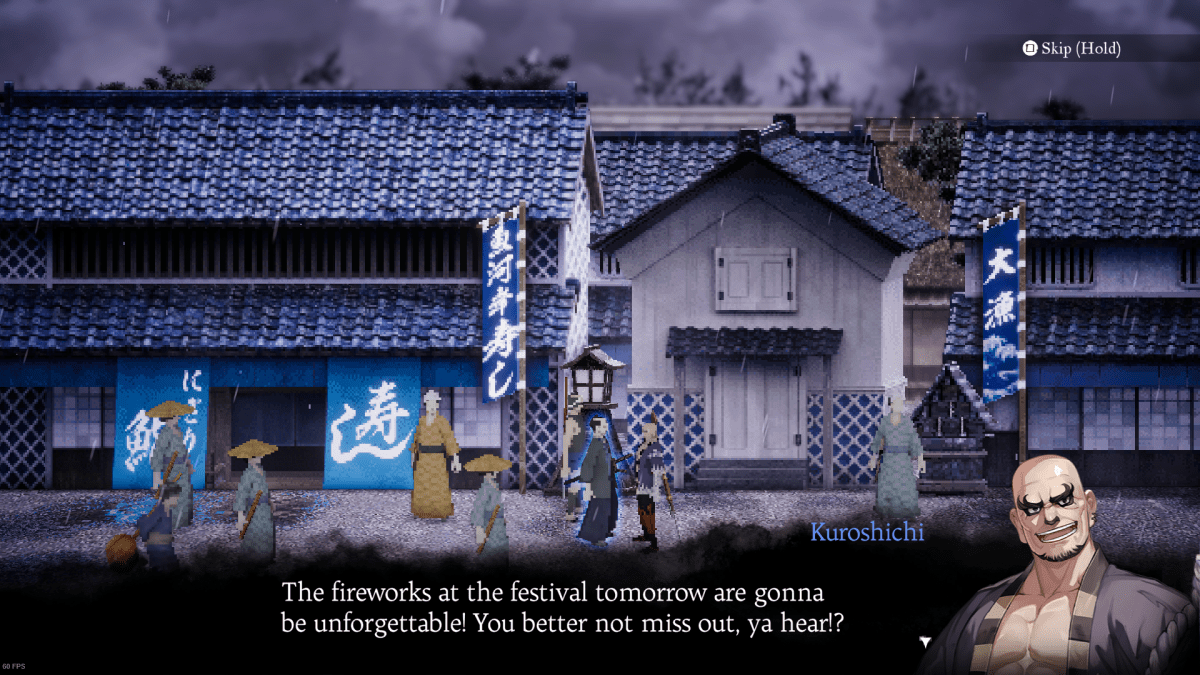Rain, Revenge, and buckets of blood: Amedama channels classic Chanbara cinema in a pixelated Edo with a stamina-based combat and a body-posession mechanic central to the gameplay. There’s an intriguing story and some lovely character designs here, but it does seem to lose something when it leans away from its core strength, which is a really solid sense of ambience and tone.
You play as Yushin, an Edo-period umbrella repairman and part-time samurai recently dispossessed of his sister and his life by a gang of armed thugs. Somehow prevented from passing on, Yushin must use his newly acquired incorporeality to take over the bodies of animals, passersby, and defeated foes to hunt down the group that slew him and abducted his sibling. It is straightforward at first, but after following the storyline a short ways, the game shows its hand by revealing a Zero Escape-style branching timeline system involving exploring different paths to gather the information you need to progress. Then, when the week ends or you meet an impassable obstacle, you are whisked back to the beginning like a heavily-armed groundhog. It’s a good set-up with a number of compelling mysteries and characters to meet, all awash with that lovely, rain-soaked atmosphere.

If you’ve played anything vaguely Souls-inspired in the past decade or so you’ll find the combat easy to slip into, which is good because the tutorial tends to drop every control on you in one or two screens. There are your usual light and heavy attacks that can be alternated to make combos, as well as a dodge, block and counter system. Said counter is a powerful tool, as even if you’re locked in a weaker body like a frog, it will let you take on much larger enemies without much too trouble. The combat system overall is more than functional, but the perspective and art style can make it hard to judge distances, especially vertically. So sometimes you’ll whiff attacks that look like they hit or be caught by blast zones you thought you were safe from.
The most interesting mechanic is the body-hopping. As a ghost, you are able to take over the bodies of incapacitated people or animals, including enemies and bosses you’ve just defeated, and use their specific abilities to access certain areas or otherwise interact with the physical world. You can also use a body’s distinct combat abilities to defeat more foes, but each body only has so much ‘soul durability’ you can use up before you’re forced into engaging in yet more Grand Theft Corpus. It ended up reminding me a lot of LEGO Star Wars of all things, as you hunt for bodies with specific abilities to unlock specific areas. It is a bit odd you can’t just wander into restricted zones in your ghost form, however, but it’s a contrivance made to reinforce the mechanics, so I’ll forgive it.

Amedama‘s strongest selling point is its tone, and there’s a desperation to the story that pairs well with the crunchy 2D graphical style and the griminess of Edo. But it’s not all perfectly aligned. Some of the anime-styled portraits sometimes feel a little too clean or cute to fully fit in, especially later when big cartoony Oni and scantily clad kunoichi add a more fantastical tone to what previously felt a bit more grounded, ghostly possession notwithstanding. Similarly, there’s something of a disconnect between the grim, Chanbara-style blood spurts and the otherwise cartoony way people actually die unless it’s of story consequence. I spent a good while wondering if the people and animals I was possessing we’re actually dying because of my actions, as despite collapsing into pools of blood, they would often seem right as rain (pun intended) once I left them alone a bit, even before time started looping.
That’s not to say you can’t marry those serious and cartoony aesthetics, just that it doesn’t quite land in Amedama. While playing, I commonly compared the game to last year’s Fate/Samurai Remnant, but while both concern shadowy conspiracies within a dangerous and corrupt depiction of Edo, the blending in of Anime-esque melodrama feels more natural in Samurai Remnant. I’m not totally sure how exactly it achieves that, but I’d wager maybe because Amedama has such a strongly specific atmosphere in the beginning that it’s more noticeable when it deviates.

I can’t help but imagine a different version of the game that sticks to that grim tone, where the people you kill stay dead until time loops round again. It would add a bit of weight to each body you possess, as using the strongest character you have access to early might mean you can’t use them again later in the run. Not to mention the thematic potential of using people as resources in a quest for revenge. The game is only in early access at the moment, mind, but I don’t expect anything so drastic to occur when the game feels otherwise quite complete.
But despite my misgivings, Amedama is still a solid and enjoyable slice of feudal intrigue and samurai action. A crunchy artstyle and smooth animations complement the tone, and while the simple combat was sometimes frustrating, it wasn’t enough to distract me from the game’s strengths. I’m not sure what else is planned to be added during the game’s early access period, but if you’re hungry for more samurai action after other recent releases, this is defintely one to keep an eye on.
Amedama is immediately available in Steam Early Access, with a demo also available.


Published: Mar 26, 2024 03:00 pm